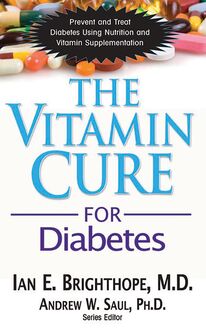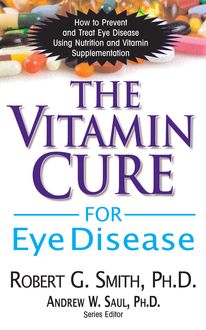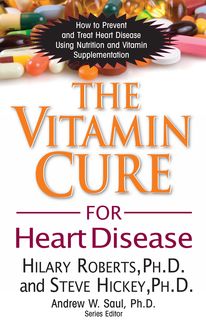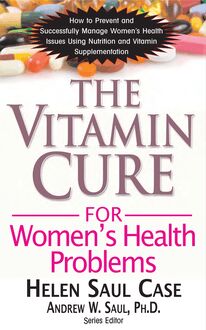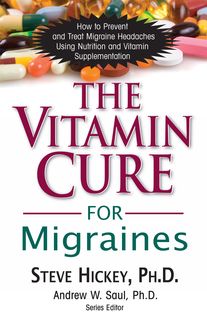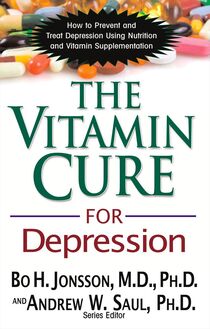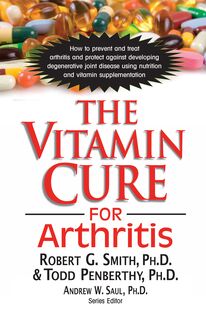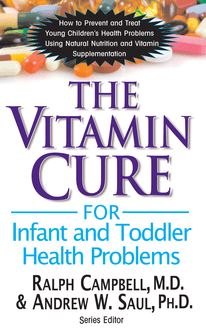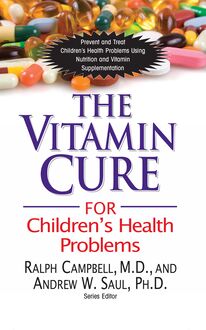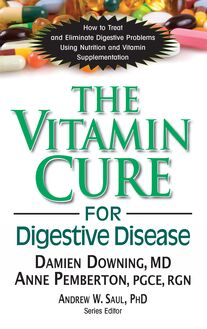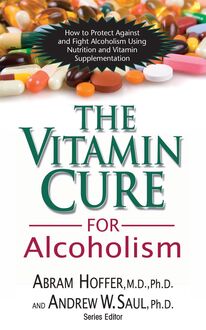The Vitamin Cure for Digestive Disease , livre ebook
112
pages
English
Ebooks
2014
Vous pourrez modifier la taille du texte de cet ouvrage
Obtenez un accès à la bibliothèque pour le consulter en ligne En savoir plus
Découvre YouScribe en t'inscrivant gratuitement
Découvre YouScribe en t'inscrivant gratuitement
112
pages
English
Ebooks
2014
Vous pourrez modifier la taille du texte de cet ouvrage
Obtenez un accès à la bibliothèque pour le consulter en ligne En savoir plus
Publié par
Date de parution
01 novembre 2014
Nombre de lectures
1
EAN13
9781591207207
Langue
English
Publié par
Date de parution
01 novembre 2014
Nombre de lectures
1
EAN13
9781591207207
Langue
English
THE
V ITAMIN
C URE
for Digestive Disease
D AMIEN D OWNING, MD
A NNE P EMBERTON, PGCE, RGN
A NDREW W. S AUL , P H D
S ERIES E DITOR
The information contained in this book is based upon the research and personal and professional experiences of the authors. It is not intended as a substitute for consulting with your physician or other healthcare provider. Any attempt to diagnose and treat an illness should be done under the direction of a healthcare professional.
The publisher does not advocate the use of any particular healthcare protocol but believes the information in this book should be available to the public. The publisher and authors are not responsible for any adverse effects or consequences resulting from the use of the suggestions, preparations, or procedures discussed in this book. Should the reader have any questions concerning the appropriateness of any procedures or preparation mentioned, the authors and the publisher strongly suggest consulting a professional healthcare advisor.
Basic Health Publications, Inc .
28812 Top of the World Drive
Laguna Beach, CA 92651
949-715-7327 www.basichealthpub.com
Library of Congress Cataloging-in-Publication Data
Downing, Damien.
The vitamin cure for digestive diseases / Damien Downing, MD, Anne Pemberton, PGCE, RGN.
pages cm
Includes bibliographical references and index.
ISBN 978-1-59120-720-7
1. Digestive organs-Diseases-Alternative treatment. 2. Vitamin therapy.
I. Pemberton, Anne. Title.
RC802.D79 2014
616.3-dc23
2014029820
Copyright 2014 by Damien Downing and Anne Pemberton
All rights reserved. No part of this publication may be reproduced, stored in a retrieval system, or transmitted, in any form or by any means, electronic, mechanical, photocopying, recording, or otherwise, without the prior written consent of the copyright owner.
Editor: Karen Anspach
Typesetting/Book design: Gary A. Rosenberg
Cover design: Mike Stromberg
Printed in the United States of America
10 9 8 7 6 5 4 3 2 1
C ONTENTS
Acknowledgments
Foreword
CHAPTER 1 .
Are You Down in the Mouth?
CHAPTER 2 .
Reflux, aka GERD
CHAPTER 3 .
Ulcers and Helicobacter Pylori
CHAPTER 4 .
The Liver
CHAPTER 5 .
The Biliary Tree
CHAPTER 6 .
The Pancreas
CHAPTER 7 .
Dysbiosis
CHAPTER 8 .
Leaky Gut
CHAPTER 9 .
The Large Intestine and Its Goings On or Out
Action Plan, Section 1:
Nutritional Approach
Action Plan, Section 2:
Supplements and Gallstone Relief Program
References
About the Authors
A CKNOWLEDGMENTS
We would like to acknowledge Dr. Patricia Kane, as her work on essential fatty acids has greatly influenced the way we both practice. Dr. Kane had no hesitation, when asked, if we could share her recipes in this book. She has been happy to offer guidance and a different perspective on some of our most difficult cases. Thank you very much, Dr. Kane.
We would also like to acknowledge our artist, Janie Mason. Janie is a very special person who has recovered from Asperger s syndrome/high functioning autism to the point that she runs her own tattoo parlor, paints, and sculpts. Her unique perspective on the art world is a breath of fresh air.
F OREWORD
The main thing you want from your digestive tract is that it does its job quietly, without talking back to you. You don t want to know that it s there.
That job is actually much bigger than you ve ever imagined. Not only is the gastrointestinal system responsible for digesting and absorbing nutrients from food and for excreting waste, it is also the largest organ of your immune system. Over two-thirds of your body s lymphocytes (the captains of immune function) are found in the lining of the small intestine. From this base they travel throughout your body sending signals that influence immunity in all other organs.
Your gastrointestinal tract has its own nervous system, technically called the enteric nervous system (ENS) and affectionately dubbed the second brain by aficionados. Your ENS has as many nerve cells as your spinal cord and is in constant communication with your brain, impacting mood and cognitive function.
Your alimentary canal is also home to about a hundred trillion microbes, which include a thousand different species of bacteria and a few dozen types of yeasts. Collectively these are called the gut microbiome. Understanding how these microbes influence human health and illness has been a major interest of mine for over three decades. In the last decade, microbiome research has blossomed into one of the most discussed topics in applied science. It s become clear that gut microbes help us to be human. The implications of that relationship will be at the cutting edge of clinical research for decades to come.
Finally, the gastrointestinal tract is an organ of detoxification. Most of this responsibility rests with the liver, but the intestinal lining is also rich in detoxifying enzymes. The liver and gut work together to remove noxious substances derived from food, your environment, gut microbes, and even the operation of your own metabolism and hormones.
These multiple functions of the digestive system interact with each other and with the food you eat to regulate your nutritional state, your metabolic state, your weight, your pattern of sleep, your energy, and your susceptibility to illness. The Vitamin Cure for Digestive Disease is a gold mine of practical information that allows you to help this system work for you, instead of against you.
Damien Downing has been a colleague and a leader in the field of nutritional medicine for over thirty years. The team of Downing and Pemberton has crafted a unique handbook that covers not only normal structure and function of the digestive system but helpful ways of treating a wide range of digestive disorders. Especially noteworthy components, which are often ignored in self-help books for digestive disorders:
They start their discussion with the mouth, which is where digestion begins, and acknowledge the over arching impact of oral health on systemic health.
They emphasize the importance of normal stomach acid and describe the many dangers of acid-suppressing drugs, the third largest-selling drug category in the world. For the past fifteen years, I ve waged a campaign against acid suppressing drugs in the United States, where many powerful acid suppressors are available without a doctor s prescription. I created an e-book, The Heartburn and Indigestion Solution, to help people overcome their dependence on acid suppression.
They give you strategies for dealing with the ulcer-causing bacterium, H. pylori, that go beyond standard drug therapy and are based on sound scientific evidence.
They explain how to maintain a healthy liver and pancreas, the solid glandular organs that secrete into the digestive canal.
They help you recognize the importance of small intestinal bacterial overgrowth, a disturbance in the ecology of the microbiome that allows normal bacteria to cause disease.
In their timely discussion on the role of gluten and other fractions of wheat, they single out wheat germ agglutinin as a significant immune irritant. This key chemical is usually under the radar of popular books on nutrition.
They explain the critical role of the intestinal lining as a barrier to toxins and allergens and give practical advice on reversing excessive intestinal permeability ( leaky gut ).
They call attention to the under-recognized role of nickel in food as an allergen and a disruptor of the normal intestinal barrier in sensitive individuals.
They offer sound practical advice for controlling irritability and inflammation in the colon that goes beyond dietary fiber.
If you want to improve digestive health, The Vitamin Cure for Digestive Disease is an excellent place to start.
Leo Galland, MD, FACN, FACP
The Foundation for Integrated Medicine
Creator, www.pilladvised.com
CHAPTER 1
A RE Y OU D OWN IN THE M OUTH ?
W e guess you are here to learn how to improve your digestive processes with good food and nutrition. To be honest, there is absolutely no point throwing in the vitamin pills if you don t adopt the healthy mouth approach and chew your food thoroughly. Food should be fluid when it moves from your mouth into your esophagus (the tube that runs from your mouth to your stomach through your throat), so if you are swallowing lumps when you eat then you certainly do need to read on. Your reason for swallowing your food in lumps might be laziness (I just want to get it down), timing (I only have fifteen minutes for lunch), or structural (I have ill-fitting dentures or missing teeth), or you may have an inflammatory condition of the mouth that is preventing you from chewing well and gaining all the possible goodness from the food you eat. We will be covering all of these in this chapter.
STRUCTURE AND FUNCTION OF THE MOUTH
The mouth or oral cavity is gaining popularity in terms of research. We have long been able to make a correlation between oral health and cardiovascular health, or, to be more precise, gum health and heart disease. However, we are beginning to see the mouth as the site of many chronic diseases. Some of these include dental caries (cavities), acquired immune deficiency syndrome (AIDS), periodontal disease (such as gingivitis), nutritional anemias, salivary gland disorders, osteoporosis, diabetes, and cancer. Congenital abnormalities are slightly different, however, they are generally related to poor maternal nutrient status, in particular folate deficiency.
The Teeth
To help you understand these relationships, we need to talk about teeth first. The teeth are a structure of enamel, dentin, and cementum wrapped around a nerve, which has huge blood supply. The teeth are retained in their bony sockets in the jaw by a fibrous structure called the periodontal membrane. Bacteria and inflammation can affect the integrity of this membrane, leading to tooth loss. 1
Teeth are prone to nutr
